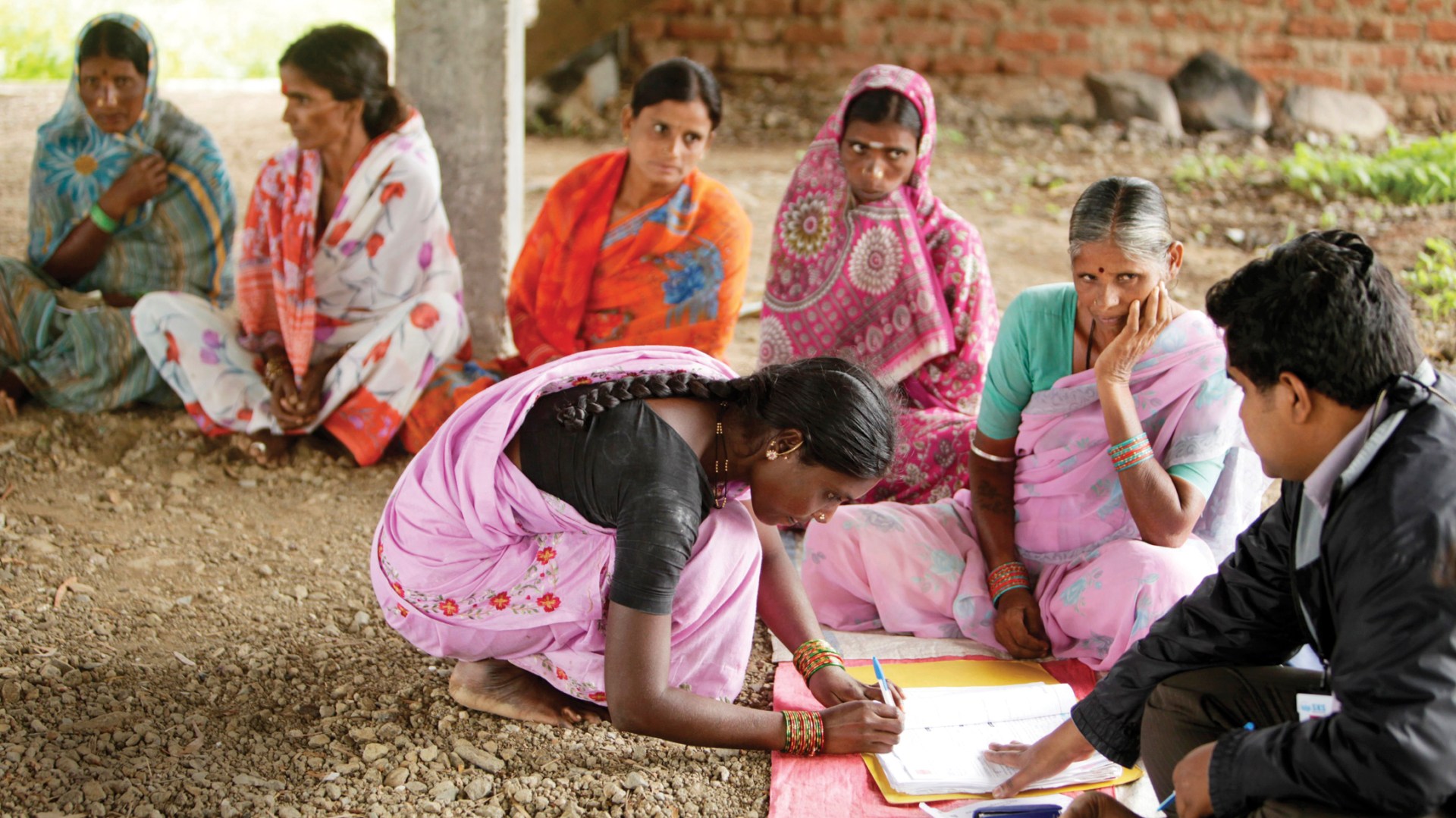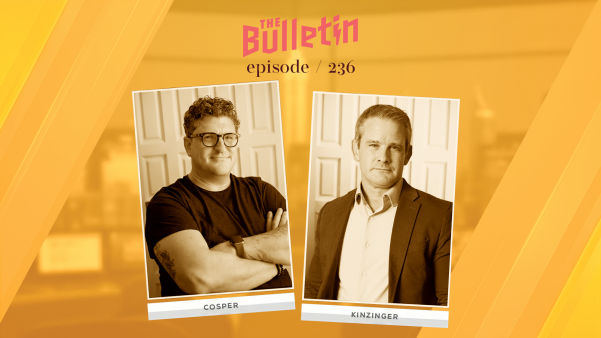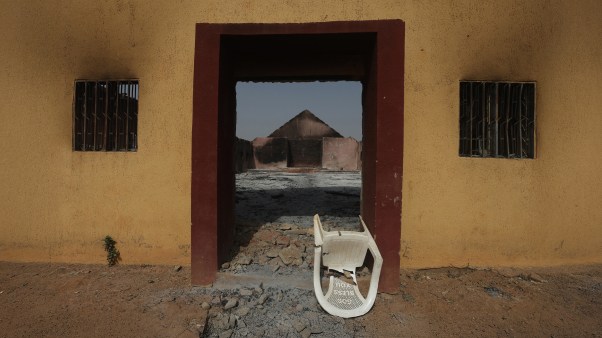Microfinance may be falling victim to its own success. Since starting in the 1970s, microfinance—the practice of providing financial services, particularly small loans, to the world's poorest—has grown rapidly worldwide.
Today, experts estimate there are 665 million client accounts at more than 3,000 financial institutions. About 188 million of these accounts are in India, while 27 million accounts are in Africa. Microfinance organizations are likewise diverse, from the multibillion-dollar Grameen Bank of Bangladesh to Christian groups such as Opportunity International, based near Chicago, and Kiva.org, which matches lenders and borrowers with loans that average $382. Microlending, savings, and insurance programs have been the darling of overseas poverty-fighting agencies.
Now scandals threaten to tarnish the reputation of these programs across the board. In Andhra Pradesh, a southeastern Indian coastal state, officials say 85 borrowers killed themselves because they could not repay high-interest loans. Some of these borrowers were pressured and harassed by collection agents.
In addition, some microfinance founders are suspected of exploiting the poor for quick profit. Last year, SKS Microfinance Ltd., also based in India, raised $350 million by becoming a for-profit, publicly traded corporation. The move made a few SKS executives and early investors very wealthy, which critics say undermines the poverty-fighting purpose of such programs.
The microfinance industry has attracted larger institutions interested in a quick buck, says Susy Cheston, senior director at World Vision, which operates Vision Fund with more than 600,000 borrowers in 40 countries. Vision Fund mostly operates through non-governmental organizations, not deposit-taking micro-banks. Cheston says, "In India, [microfinance is] growing too much too fast, with new providers coming in who [are] interested only in profits."
Meanwhile, Nigerian officials say Africa's microfinance organizations face both high loan-default rates and corrupt officials who exploit lending for personal benefit.
The reputation of the industry has declined so badly that Muhammad Yunus, who received the Nobel Peace Prize for founding Grameen Bank, wrote recently in The New York Times, "I never imagined that one day microcredit would give rise to its own breed of loan sharks."
Beyond Borrowing
While not directly tainted by these practices, Christian microfinance leaders say they are responding to the scandals by keeping the needs of clients topmost. This means doing more than lending money to the poor. It also means reaffirming the spiritual dimension as essential for addressing greed, corruption, and exploitation.
"When I came into the industry in 1992," says Dennis Ripley, a senior vice president at Opportunity International, "the early institutions were about providing loans to build the businesses of the poor," not making quick profits off the poor.
After graduating from seminary, Ripley believed his call was to help the church help the poor rather than serve as a full-time pastor. Eventually he joined Opportunity, which was among the first organizations to operate chartered banks to meet the needs of poor people, especially women in small business.
Opportunity made heavy investments in Eastern Europe after the fall of the Soviet Union. It soon learned that many people valued a safe place to put their money more than a loan. "If you offer people a loan versus a savings account, 70 percent prefer a safe place to save their money," Ripley says. Opportunity is now one of the oldest and largest industry players, with 1.4 million loans outstanding and more than half a million savings accounts at the end of 2009.
The mission shift toward savings also has required lending organizations to become regulated banks. Banks that hold savings deposits cannot become dependent on wealthy donors to fund their day-to-day operations and still meet the legal requirements to protect the money of their depositors.
The drive to better serve the poor had unintended consequences. It became clear that lenders could earn significant profits by providing loans, savings accounts, and related services with almost no competition. Ripley recalls that when Opportunity started providing these services, multinational corporations approached its leaders to learn how to tap into the so-called "fortune at the bottom of the pyramid."
The Transformation Lens
Today, microenterprise leaders are more likely to have an MBA than a divinity degree. Jeffrey Lee is an example.
Lee, chief executive of Urwego Opportunity Bank in Rwanda since early 2009, worked for 30 years in retail and commercial banking in the United States and South Korea. Nine years ago, Lee promised God that he would tithe one-tenth of his life to Christian work.
Lee contacted Sammy Mah, until recently head of World Relief, to express his willingness to serve with the evangelical agency. Mah told him about a joint venture that World Relief, Hope International, and Opportunity International were starting in Kigali, Rwanda, named Urwego (meaning "a ladder up" in the local Kinyarwanda language).
Just when Lee was ready to relocate to Rwanda and take on leadership at Urwego, it looked as though he would not be needed; other leaders were already in place. But Opportunity arranged for Lee to visit the country for a few days. "I arrived, and the Lord prepared me. I saw the opportunity of serving the least of these brethren and using financial services," Lee says. By the end of 2009, the bank had more than 30,000 clients with an average savings balance of $60.
Around the time Lee stepped into leadership at Urwego, Opportunity was making public a detailed explanation of its ministry model. Called the Transformation Lens, the organization's 2008 white paper describes seven aspects of transformation:
- Dignity: Recognizing a person's respect and unique value.
- Authority: Empowering a person's informed choice within the moral will of God.
- Security: Reducing fear, threats, or violence, while increasing economic and spiritual security.
- Adequate provision: Helping provide access to necessities of life for families.
- Purpose, hope, and meaning: Developing a person's potential and his hopeful attitude.
- Freedom and appropriate boundaries: Enhancing human rights and God-given freedoms.
- Authentic relationships and love: Building stronger relationships within families, communities, and markets.
Urwego's goal is for every program or product to fulfill at least three of the seven aspects of transformation. (Many programs address all seven, but three are necessary to move an idea forward.)
Last year, Lee and the Urwego staff dreamed of launching a new initiative: to supply $1,800 loans for motorcycle taxis that a borrower could pay off in one year. The program debuted in March 2011, and the bank is gearing up to make up to 25 motorcycle loans per week.
Meanwhile, Lee has his eye on obtaining a $200,000 grant from a United Nations agency to set up mobile phone banking for small-scale farmers in hard-to-reach areas.
Heart of the Mission
Given the move toward banking, faith-based microfinance groups face a challenge: how to be a for-profit bank while keeping the heart of a Christian organization.
Some don't see the for-profit status as an issue. At Urwego, the bank's shareholders (Opportunity International, Hope International, World Relief, and World Relief-Canada) share basic goals. Peter Greer, chief executive of Hope International, says, "NGO or for-profit, I don't think that's the key issue. The bigger issue is not the format but the focus."
Mark Russell, author of The Missional Entrepreneur and editor of Our Souls at Work, also consults for microfinance organizations. "They have a high degree of intentionality," he says of microfinance groups that are faith-based. "They are able to have a tremendous effect in their clients' lives."
'If we limit what we do to economic transformation, we are no different from secular organizations. So we are intentionally producing social and spiritual transformation.'
One of Urwego's key methods is to forge many ties between personal transformation and economic growth. Urwego creates such ties by supplementing its programs with financial education. A Crown Financial Ministries video on budgeting and related biblical principles is played in the banking halls.
Lee says, "If we limit what we do to economic transformation, we are no different from secular organizations. So we are intentionally producing social and spiritual transformation."
Changing lives works in all directions. "People think that transformation takes place only in the field," Lee says, but he wants bank employees also to be transformed. "Without being transformed," he asks, "how can you be transformative?"
The bank developed a corporate transformation plan, including staff devotions twice a week. It has set up an incentive system that focuses on building quality relationships, not financial transactions or loan volume, that drive short-term profits. "When our leadership team meets, we begin with prayer and end in prayer," says Lee. "And all our client meetings begin and end in prayer."
Bottom-Up Innovation
Hope International likewise supports programs outside formal banking, including 65,000 informal church-based savings groups.
These groups help people save as little as 10 cents a week in a joint account, and provide a small financial cushion for their members. Collecting savings in a local bank account also allows the local economy to put money to use that would otherwise have been stuffed into mattresses or hidden underground. Even small amounts of funds held jointly may be loaned out to local businesses.
"We're equipping people to save money," Greer says. "We're doing it through churches in creative ways, which is producing incredible results." Many of these savings groups touch on other core purposes, such as Bible study or HIV/AIDS care and prevention.
Researchers are conducting long-term studies on the benefits of microfinance programs. Their goal is to uncover how to improve the programs for maximum impact in reducing poverty. Currently most program benefits go directly to individuals. But the potential to reduce poverty at the community level grows as more people participate in the programs.
At the grassroots, World Vision provides complementary services that focus on children. The agency's For Every Child campaign hopes to raise $100 million for 1.7 million loan clients. This would improve the lives of 5.7 million children by improving their nutrition, health care, and education. These improvements occur when World Vision's microfinance programs are linked to its health care, child protection, and agriculture projects.
Opportunity has focused on deeply impoverished rural areas that other microfinance organizations have avoided for being unprofitable. In February 2010, Opportunity received a $16 million grant from the Bill and Melinda Gates Foundation and the MasterCard Foundation that will allow its banks in Africa to use technology such as cell phone banking to help farmers get the best price as they sell local fruits and vegetables and cash crops such as coffee beans.
Perhaps more importantly, the grant also paves the way to provide financing for farmers. Roughly 65 percent of the labor force in sub-Saharan Africa is engaged in agriculture, yet the continent is a net food importer. The first step in helping African farmers feed Africans is to give them the financial wherewithal to make better use of seed, fertilizer, water, and technology.
Providing credit to farmers is not enough. Africa is a graveyard for such programs. Farmers are a huge risk to banks, because if the rain does not fall, loans go unpaid. Crop insurance can reduce this risk. MicroEnsure, an Opportunity subsidiary, developed an insurance policy for the smallest farmers. Using satellite weather data, the policies automatically pay when the rain fails to reach a certain level.
Critics note that the changes in the industry have opened it up to abuse and ill-gotten profit. Yet those changes have also opened up the possibility of agriculture finance in Africa, which could contribute to ending the continent's famines. Given recent history, the changes will encourage both.
It isn't the potential for profit that caused the microfinance industry's problem, but rather profits wrongly pursued, ministry leaders told Christianity Today. Christian microfinance institutions have operated nonprofit lending organizations as well as full-scale, regulated banks—all while serving some of the poorest people on earth.
For Christian microfinance institutions, then, the goal is to stay on mission.
Rob Moll is a CT editor at large and author of
The Art of Dying: Living Fully into the Life to Come
(InterVarsity Press, 2010). He was formerly employed by Opportunity International.Copyright © 2011 Christianity Today. Click for reprint information.
Related Elsewhere:
Previous Christianity Today articles on microfinance include:
Microfinance, Now More Micro | Hit by the credit crunch, lenders anticipate fewer loans to the poor. (December 17, 2008)
The Kiva Effect | Internet-based lender inspires innovation in Christian microfinance. (December 10, 2009)
Small Loans, Big Goals | Nobel Prize boosts growing microfinance ventures. (November 20, 2006)










